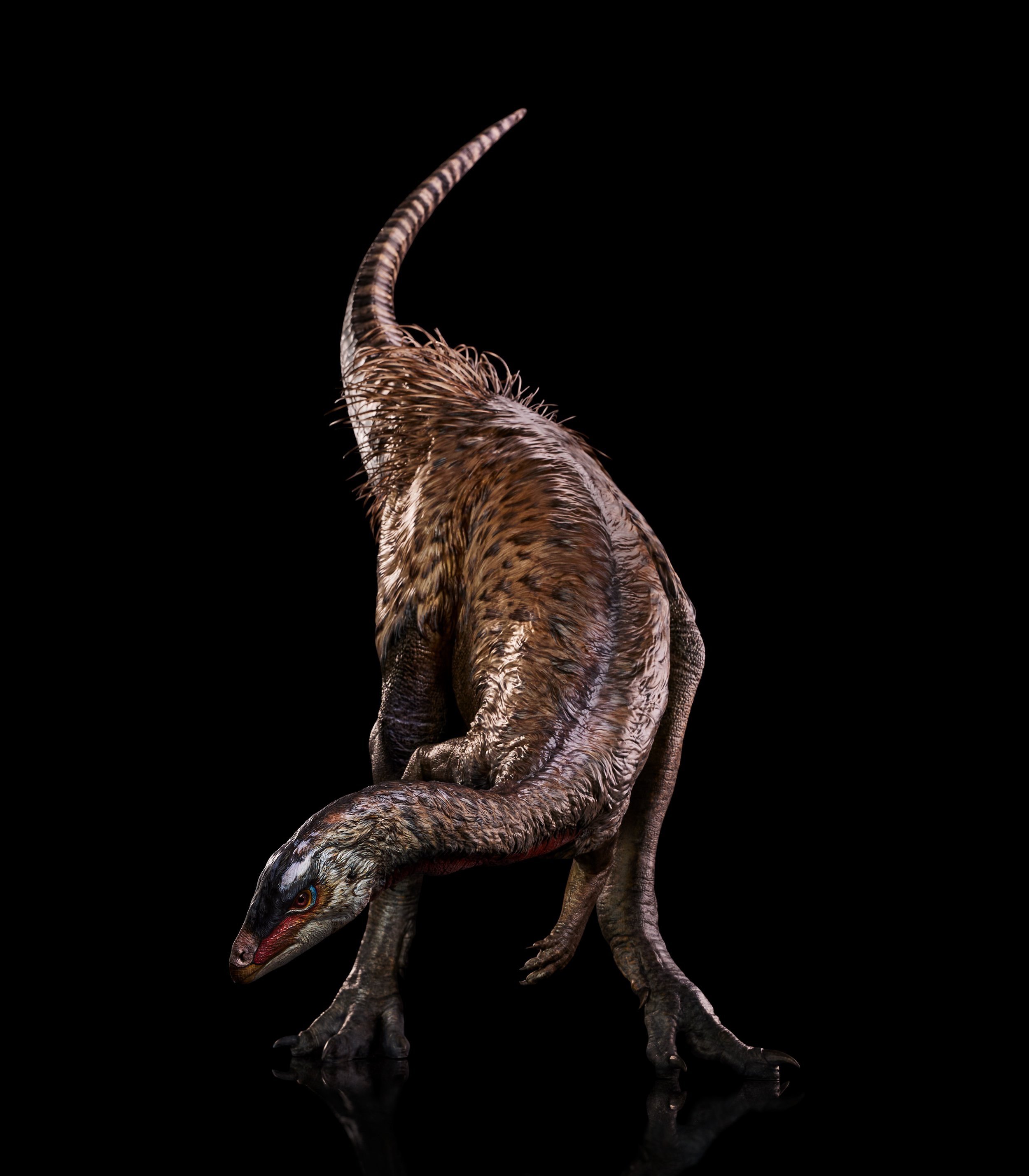
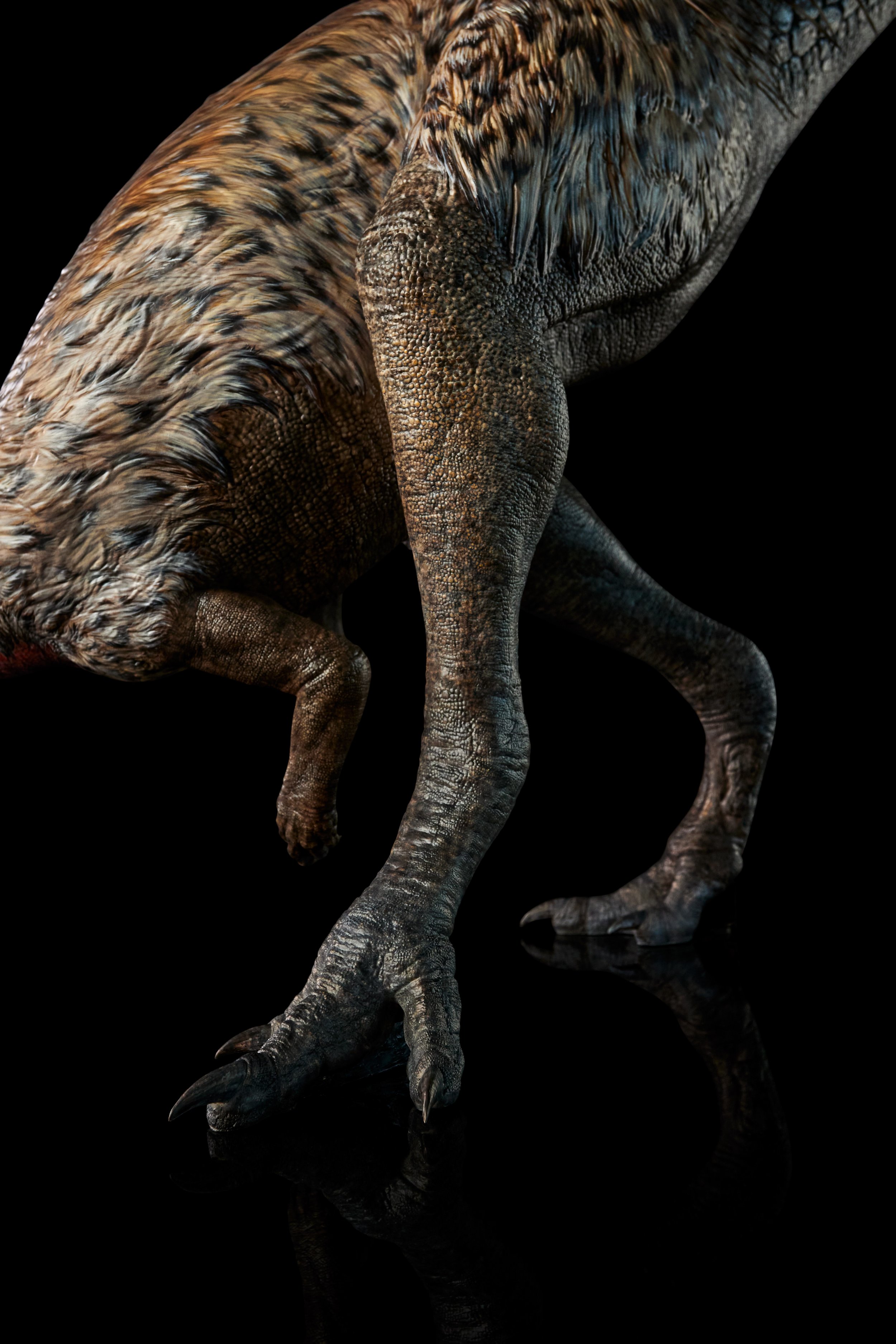
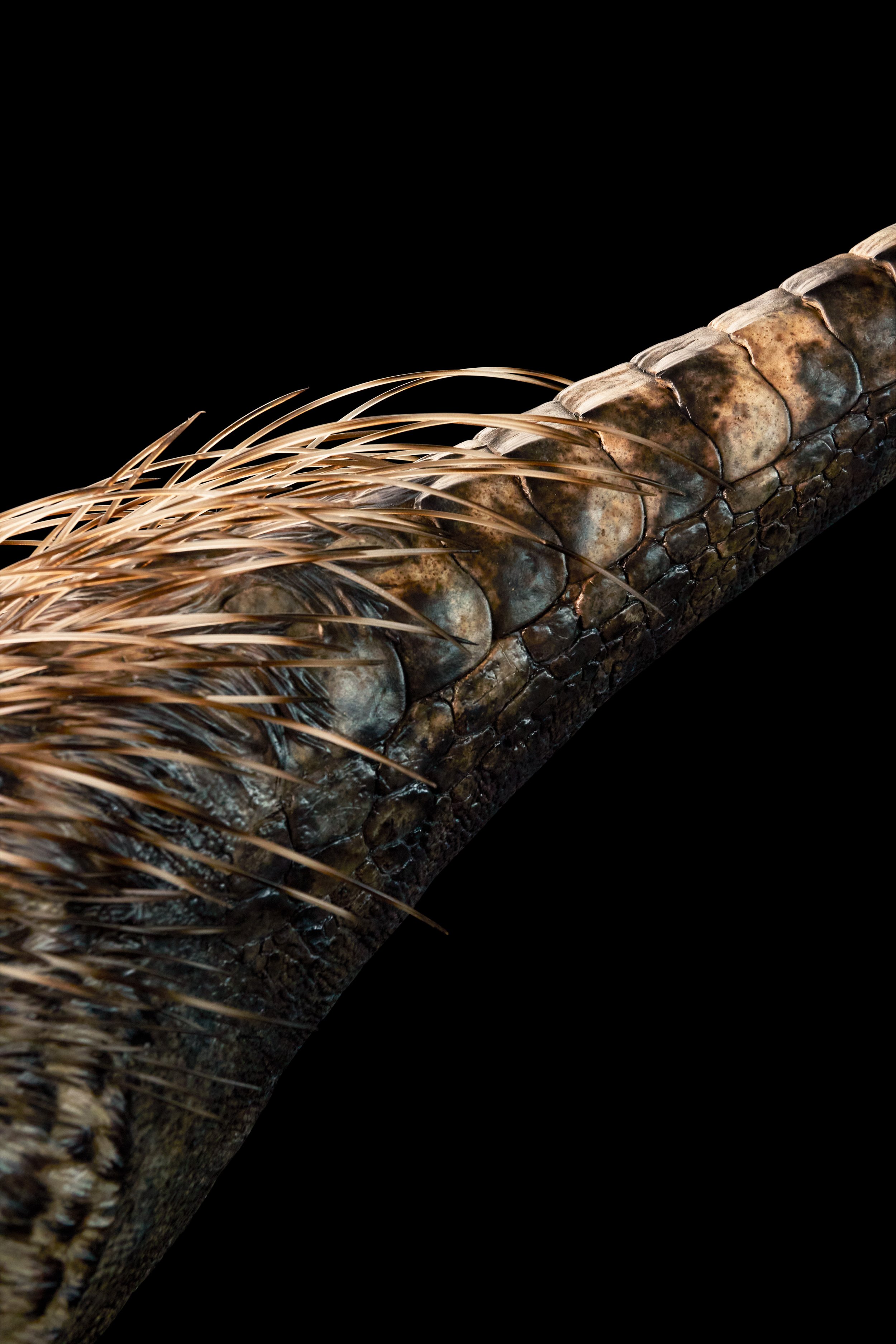
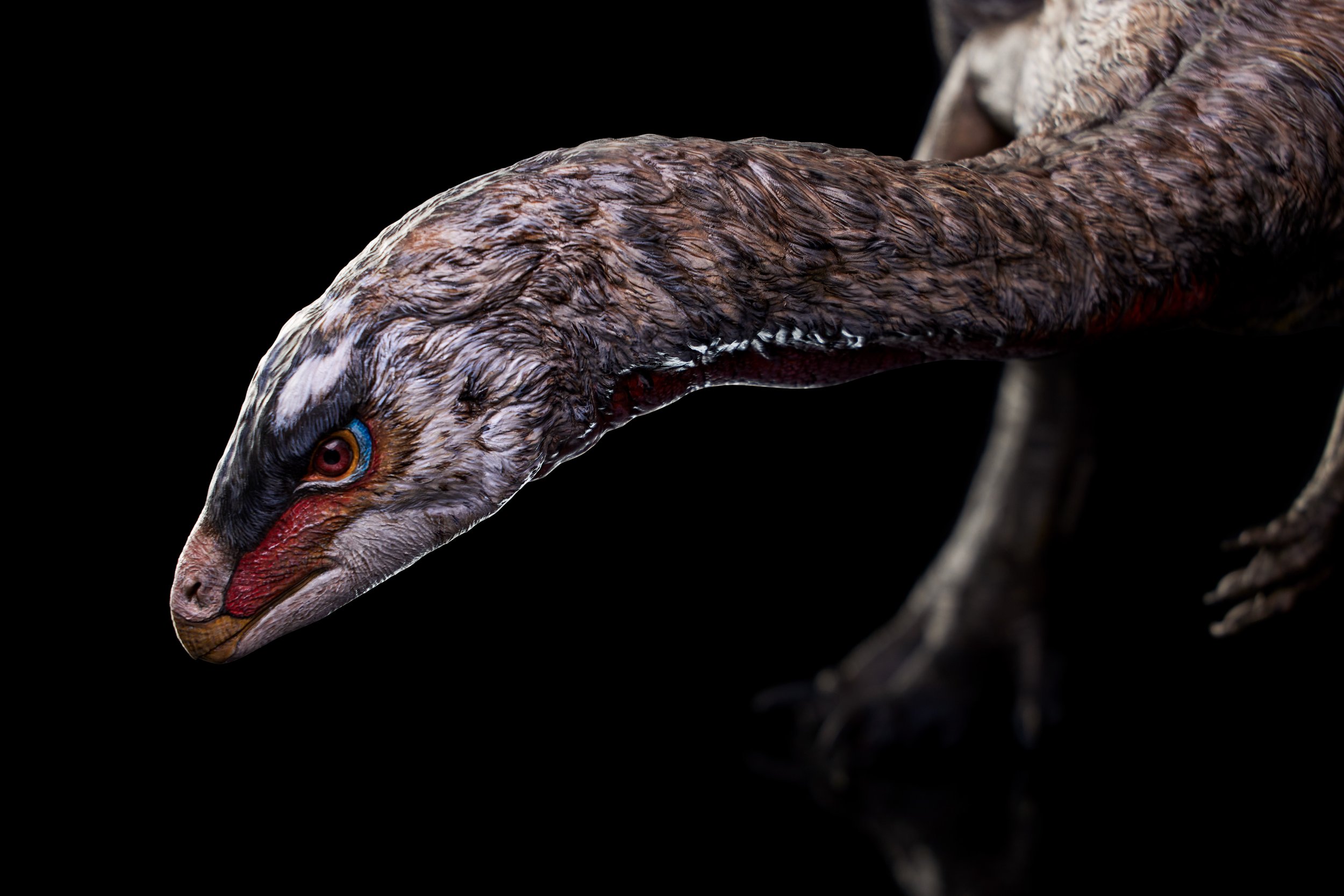
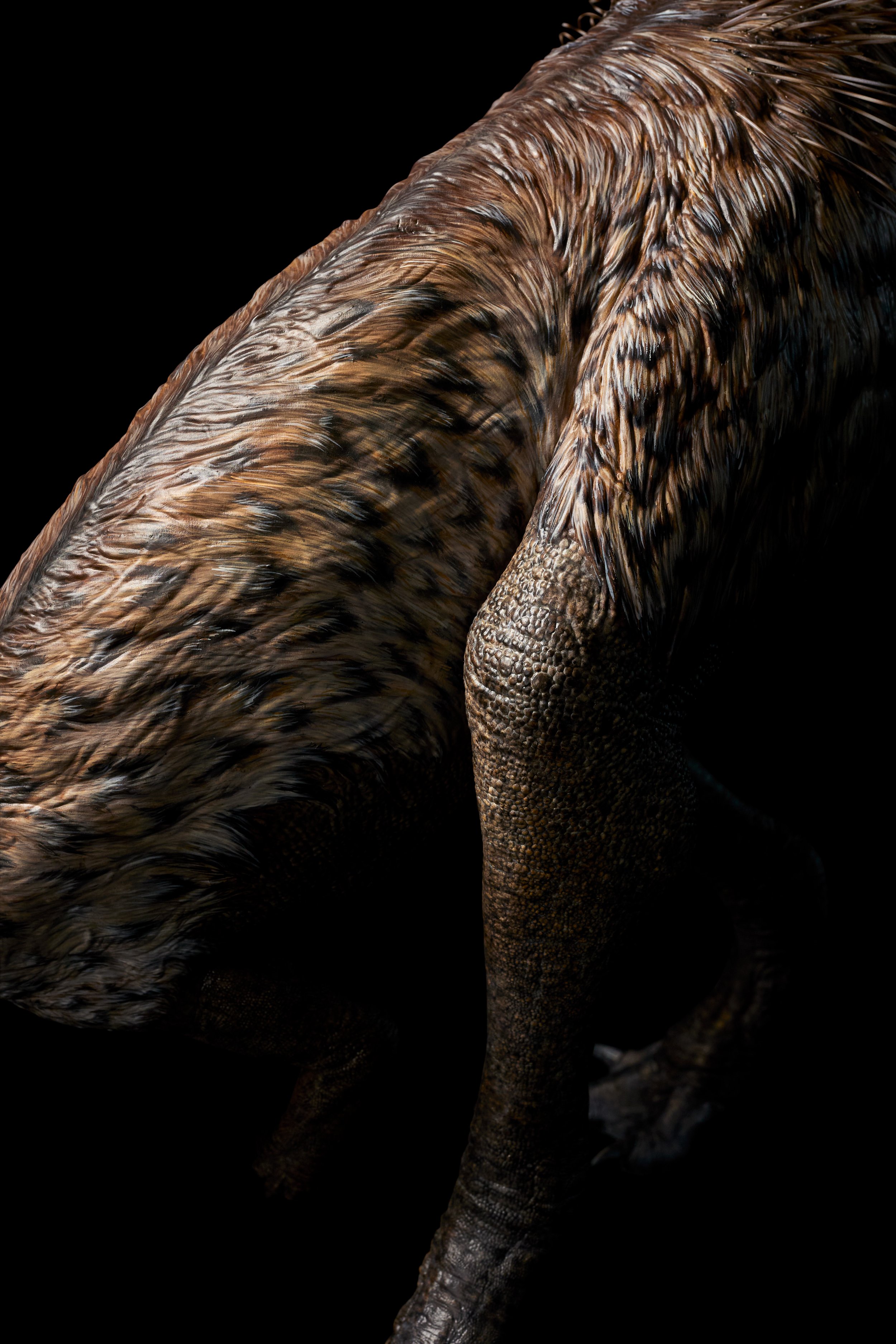
Nanosaurus sp.
The Zurich Zoological Museum commissioned us to create a 2 m. long freestanding model of a Nanosaur, designed to endure interaction from visitors. Consequently, utilizing fur for protofeathers was impractical. Instead, we crafted the feather textures as digital reliefs using Z-brush. For the tail's spikes, we employed durable fish wire, embedding it deeply into the structure of a fortified 3D print. The entire model received a detailed finish through both hand painting and airbrush techniques, under the careful supervision of the Zurich Zoological Museum.
Photo by Rasmus Sigvaldi
